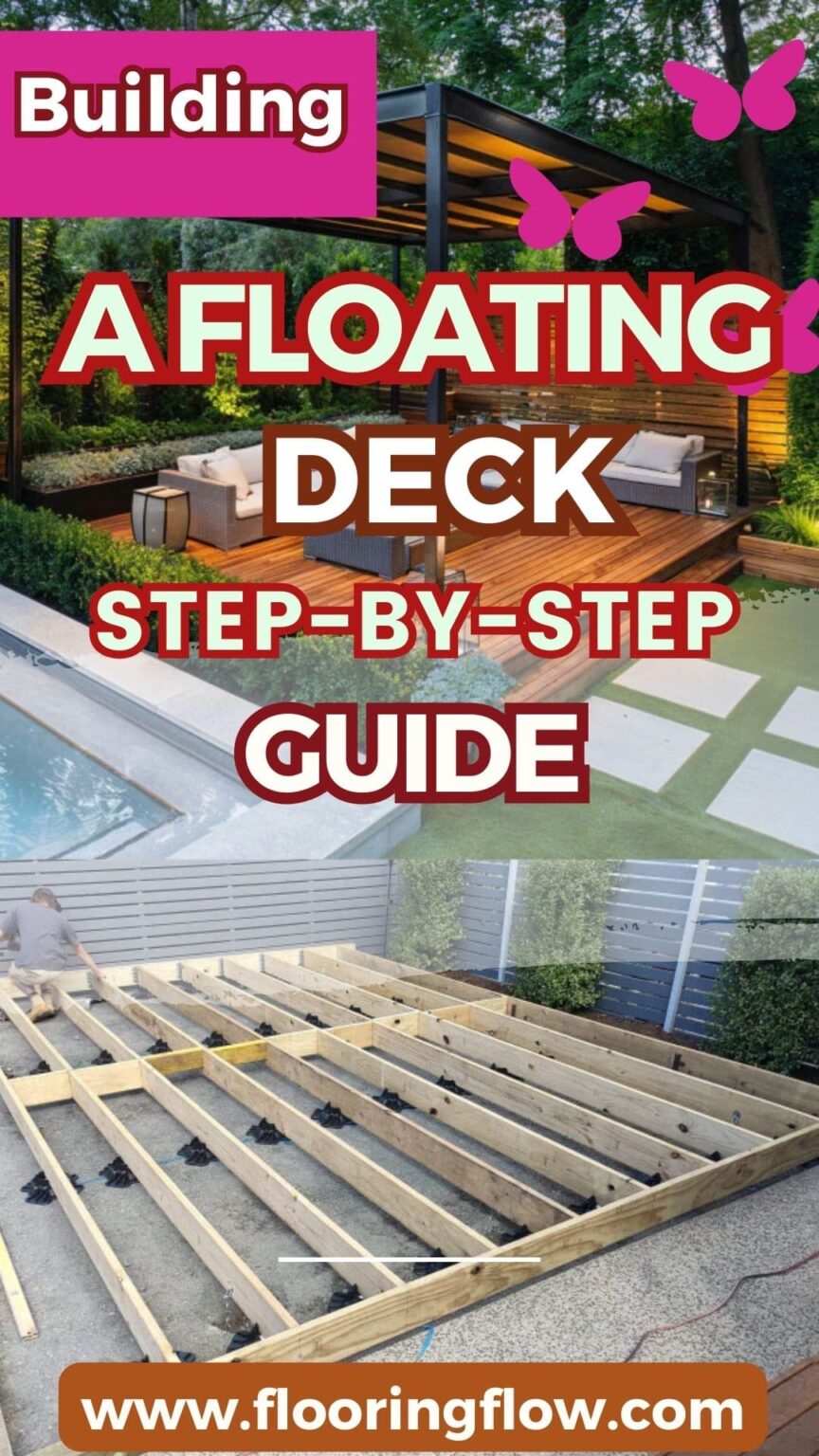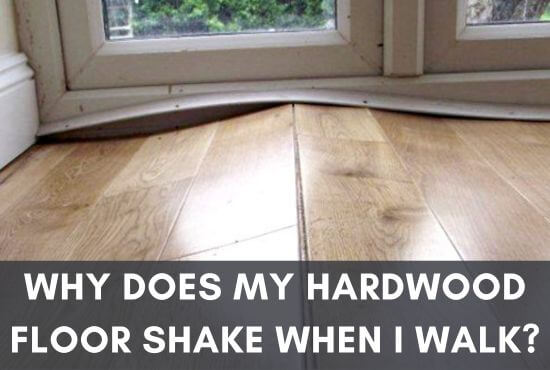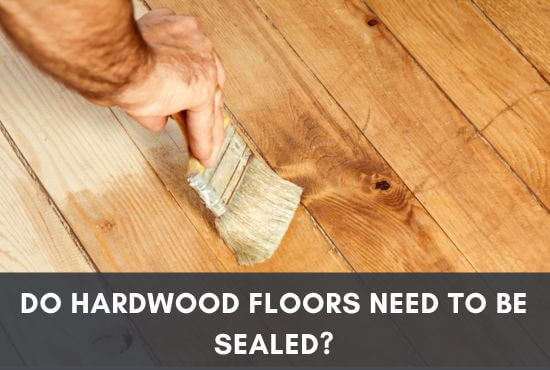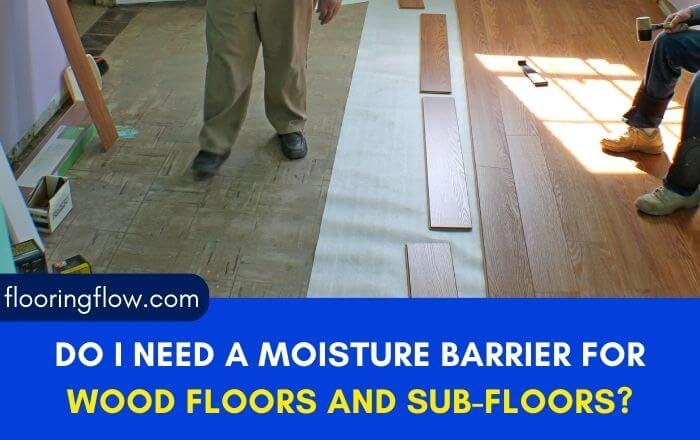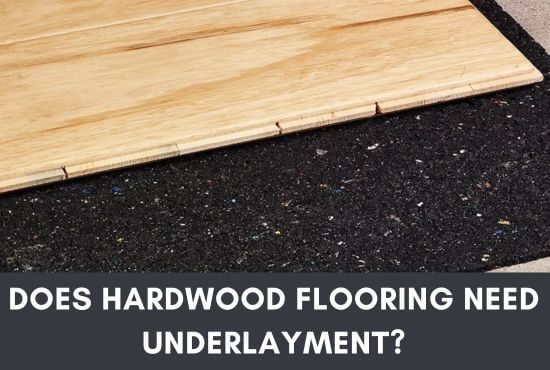You’ve likely dealt with this before – the sensation of walking on a floor that bounces like a trampoline can be unsettling. Are bouncy floors dangerous? This thought can indeed be unsettling, and you’re right to wonder about their safety.
Bouncy floors can be very dangerous. This usually happens when the floor joists, which are the sturdy beams supporting the floor, become damaged or rotten. Usually, the ends of the joists are weakened where they meet the wall, causing bounciness in the floor.
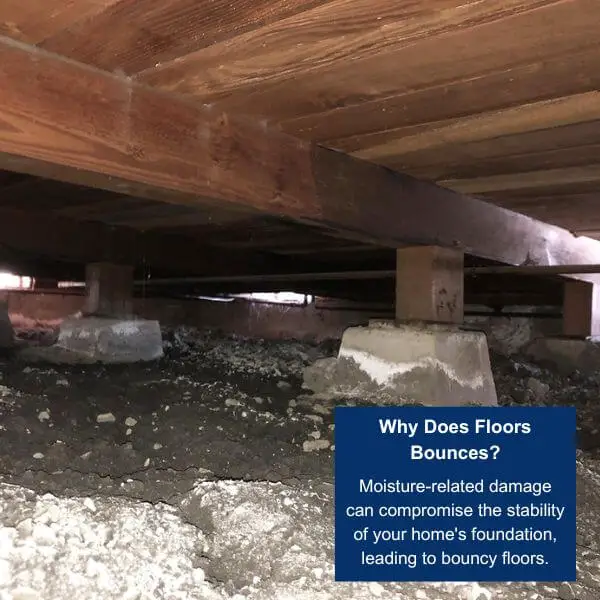
In many cases, this occurs when moisture from the outside enters the building and saturates the ends of the joists. Over time, this leads to rot, which causes the joist ends to weaken.
Initially, the joists may shrink due to the rot, causing them to move and bounce within their housing in the wall or hanger. As the rot progresses, the joist end will deteriorate, leaving the joist unsupported.
This problem is commonly seen in joists within external masonry walls, where water seeps via the masonry into the joists ends.
It can also happen with first-floor timber joists above damp crawl spaces, where water can rise from the ground and soak into the joists, often accompanied by water vapor and condensation.
No matter how it occurs, this issue needs attention. Rot tends to affect multiple joists, and if the dampness continues, it’s likely to spread. Essentially, these affected joists rely solely on the floorboards connecting them to the stronger neighboring joists for support.
As a DIY enthusiast, I’ve fixed many bouncy floor issues myself, and based on my experience, I’m here to share seven effective ways to fix bouncy floors.
So, stay connected to learn how to address this common problem and make your floors safe and stable again.
Related Sources: Say goodbye to Chips In Hardwood Floors!
Table of Contents
- 1 How To Fix Bouncy Floors? – 07 DIY Methods
- 2 Cost To Fix Bouncy Floors
- 3 Wrapping It Up
- 4 FAQs
How To Fix Bouncy Floors? – 07 DIY Methods
It is confirmed by Extension Housing Specialist Jerome R. Smith that installing a crawl space vapor barrier helps prevent moisture-related damage to structural components (1).
While a crawl space dehumidifier can further control moisture levels, reported by civil engineer Jarek Kurnitski, (2).
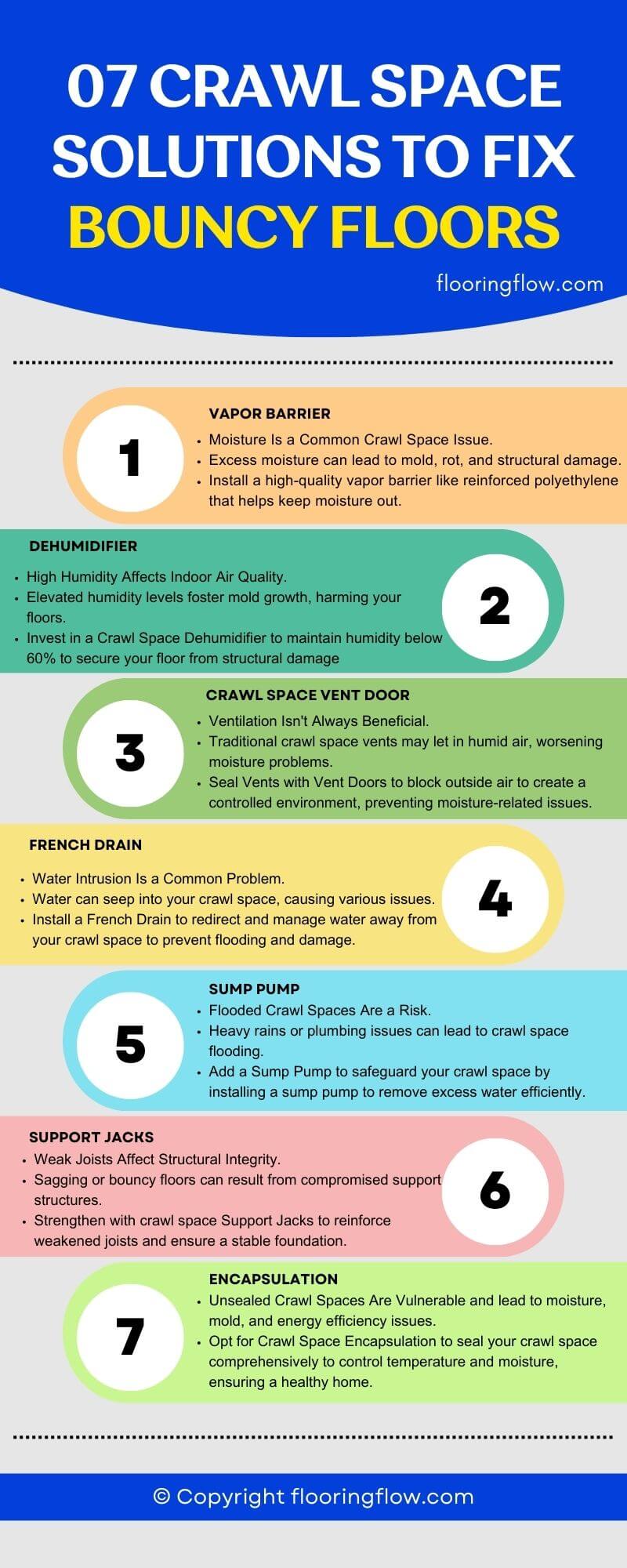
Indeed, these fixes can ensure safety and stability in your floors. But there’s more to it as I have also wrote a whole guide on fixing nail pops in hardwood floors, and in the following sections, I’ll dive into seven DIY methods to fix bouncy floors in detail.
So, continue reading to discover comprehensive solutions to make your floors safe and sturdy again. Your home’s comfort and safety depend on it.
1. Crawl Space Vapor Barrier
The soil near a building can contain moisture in liquid and vapor forms. Liquid water from surface runoff or the water table can enter through cracks and openings, seeping into the soil and porous building materials like concrete, stone, and wood, researched by John F. Straube, Ph.D. Associate Member ASHRAE (3).
It is clear from the above research that the reason for house shaking but no earthquake is the moisture in floors that weakens them and that makes you feel like earthquakes or vibrations and even sometimes furniture starts moving when you walk on spongy floors.
Installing a crawl space vapor barrier is an effective way to prevent moisture issues under hardwood floors, which can, in turn, help stabilize your floors and reduce their bounciness.
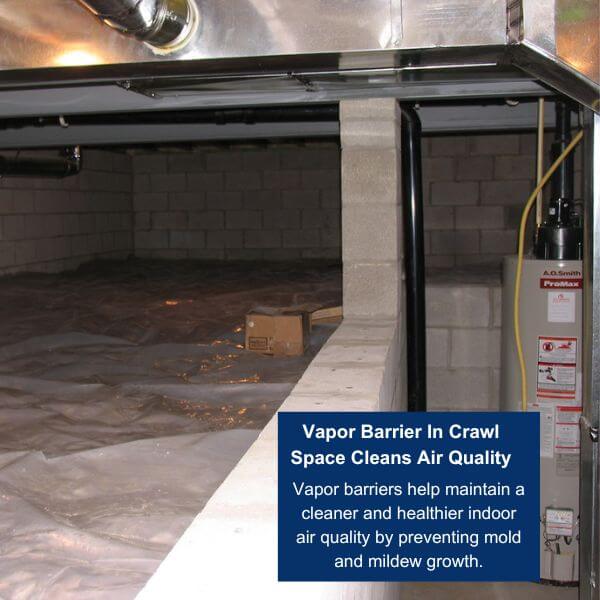
Crawl spaces are typically damp and hard to control. There’s not much separating your floor from the messy crawl space below. This is where our vapor barrier comes into play.
Our vapor barrier acts like a powerful shield against moisture. It keeps water away, whether it’s from the ground or humid air.
Groundworks uses a 20-mil vapor barrier made from a tough material called polyethylene, which also has antibacterial properties. It doesn’t only keep water out, but it also improves the look of the crawl space.
When you install this vapor barrier in your crawl space, it stops moisture from moving upwards, a process known as the Stack Effect.
This prevents warm, humid air from reaching your floors and the structures underneath them. The result is that your floors stay stable and don’t bounce.
Beyond its moisture-controlling prowess, a crawl space vapor barrier plays a pivotal role in enhancing indoor air quality.
By preventing moisture-related problems like mold and mildew under hardwood floors, it helps maintain a cleaner and healthier living environment for you and your family.
Furthermore, the stability it brings to your floors not only ensures a more solid footing but also contributes to the longevity of your home’s structural elements.
So, in addition to addressing immediate concerns, a crawl space vapor barrier is a smart investment in the long-term durability and overall well-being of your home.
Also Read: Gouges are a common problem in hardwood floors which can be caused by dripping or dragging something heavy on the wooden surface. Discover how to fix gouges in hardwood floors.
How Do Crawl Space Vapor Barriers Work?
Crawl space vapor barriers are like strong shields made of thick plastic. They’re put on the ground to stop water vapor from getting into your crawl space, the area under your home.
These barriers work really well to keep ground moisture out, but they can’t stop other types of moisture, like water from heavy rain or leaky pipes.
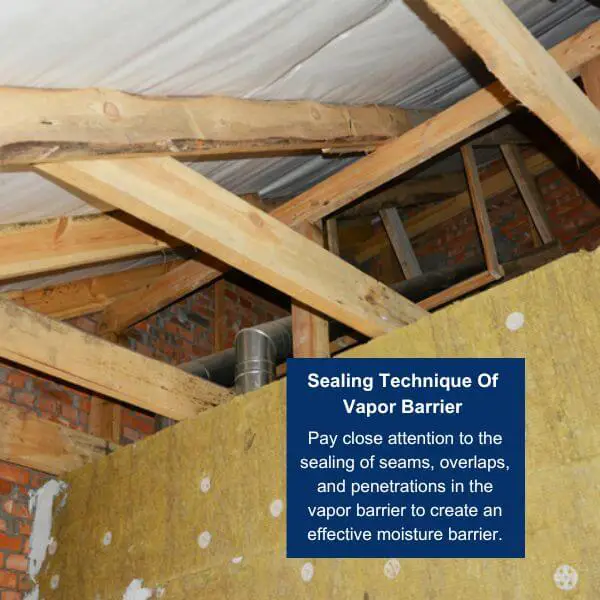
To be super safe, it’s smart to use a vapor barrier along with a waterproofing system to keep your crawl space really dry.
You might think you don’t need a vapor barrier if you live in a dry place like Arizona, but even there, the ground can have more moisture than you’d expect.
A study in Flagstaff, Arizona, found that sealing crawl spaces saved a lot of energy because it kept moisture out and made it easier to control the temperature inside homes.
Why Thickness Matters for Vapor Barriers?
When selecting a crawl space vapor barrier, its thickness matters because it directly influences its effectiveness and longevity.
The Farm White Plastic Sheeting Film with 10 mil thickness is a great option that offers excellent protection and resilience for crawl spaces.
I’ve personally used this particular plastic sheeting for my crawl space, and it worked wonders providing robust insulation, and the generous 10′ x 100′ size covered my crawl space area effectively.
This white sheeting acts as a formidable shield against water vapor. Placed on the ground beneath your home, it works diligently to prevent water vapor from infiltrating your crawl space.
By doing so, it keeps ground moisture at bay, effectively combating one of the leading causes of floor instability.
What sets this plastic sheeting apart is its versatility and durability. It’s thick and sturdy, so it can withstand the rigors of being exposed in the crawl space without getting damaged easily.
This was significantly super amazing for me because my crawl space lacked the protection of a concrete floor.
2. French Drain In Crawl Space (Perimeter drain)
During the summer, the relative humidity in the crawl space tends to stay quite high, typically ranging from 85% to 95%. This means that for several weeks, the conditions have been just right for water to condense, as reported by Samuelsson in 1994 (4).
Installing a French drain in your crawl space can be highly effective to fix these moisture related problems in wooden structures causing floors to bounce.
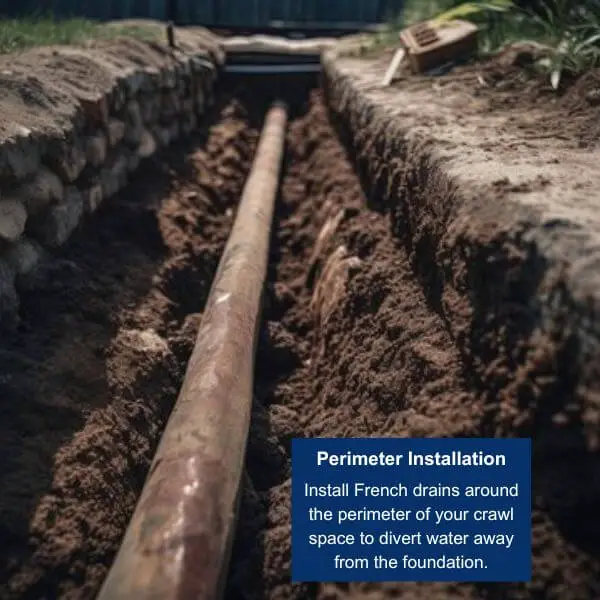
This drain, usually installed around the perimeter of your crawl space, helps manage excess water and moisture.
When it rains heavily or there’s groundwater seepage, a French drain collects this water and directs it away from your foundation, preventing it from saturating the soil and damaging your floor’s supporting structure.
This drainage system is particularly useful in areas prone to heavy rainfall or where the water table is high.
Don’t Miss: How To Fix Holes In Hardwood Floors?
How Do French Drains In Crawl Space Work?
A French drain in your crawl space helps move standing water either directly to a sump pump or channel it outside via the main foundation wall.
After heavy rains, when your crawl space has water intrusion, a waterproof drainage system is also needed.
French drains work best when used alongside other drainage methods to fix water flow issues with sloping floors in a 100 year old house.
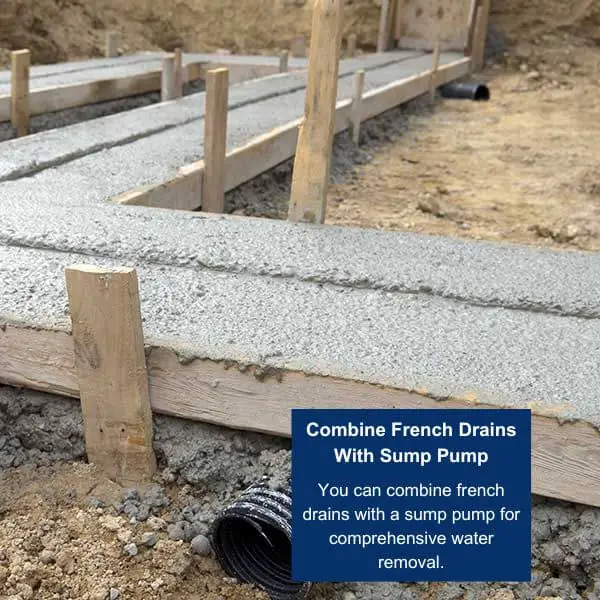
As an example, if your house is on a slope and water is flowing toward it, an exterior French drain uphill from your house can redirect the water away, keeping your basement or crawl space dry.
On a low-lying property, you’ll likely need a drainage system that encircles your house completely. Installing an exterior system during construction is easy and cost-effective.
But for existing homes, it’s tough and costly. You have to dig down to your crawl space or basement level, even if there are driveways, walkways, or plants in the way. Plus, fixing it if it gets clogged is tricky.
For fixing a wet crawl space or wet basement in an existing home, an interior French drain is more popular.
You’ll have to cut into the concrete or dig inside the foundation wall to create a trench. In this trench, you’ll need to place a gravel and perforated pipe that directs any water seepage to a sump pump pit.
Depending on your house’s layout, you might slope parts of the trench towards multiple sump pumps.
Why Durability Matters For French Drain?
Durability is an important factor to consider when installing a French drain in your crawl space or basement.
This is because the drain system is responsible for managing excess water and moisture, which can be highly damaging to the structural integrity of your home over time.
One stand out option is NDS Hydraway Drain Pipe that I found particularly sturdy when applied in my DIY project for several compelling reasons.
Firstly, its user-friendly design made installation a breeze. The straightforward setup with the pre-equipped sock, aggregate-friendly structure, and well-placed perforations significantly simplified the installation process, even for a DIY enthusiast like myself.
Furthermore, its reliability and durability were impressive. I could trust that this drainage system would perform consistently over time, even in challenging weather conditions.
This gave me peace of mind knowing that my do-it-yourself flooring project would continue to effectively manage moisture and prevent issues like waterlogging or vibrating floors.
The efficiency of the drain pipe also stood out. It swiftly captured and redirected excess water away from the area, preventing potential damage and maintaining the structural integrity of my property.
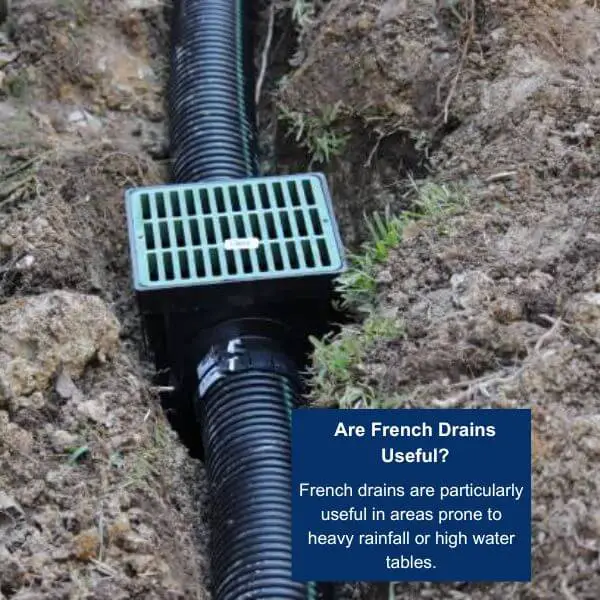
This performance not only safeguarded my investment but also saved me money on potential future repairs.
Moreover, its versatility was a significant advantage. Whether I was tackling a moisture control problem around my home’s foundation or addressing issues with bouncy floors in my basement, the NDS Hydraway Drain Pipe proved adaptable and effective in various applications.
Using this drain pipe, I could address multiple concerns with a single solution, streamlining my home project and reducing costs.
It not only simplified the task at hand but also provided a long-lasting and reliable solution for moisture control and fixing bouncy floors, ultimately enhancing the value and comfort of my property.
You May Find Helpful: How To Fix Hollow Spots In Hardwood Floors?
3. Sump Pump Drainage System
As per the report conducted by Thomas Scherer, Extension Agricultural Engineer, in the case of water seepage, the initial step is diverting it towards a floor drain. However, if the floor drain experiences obstruction or exhibits slow drainage, the recommended course of action is the installation of a pump (5).
When you install a sump pump in crawl space, it plays an important role in maintaining the integrity of your floor’s foundation by moving the water out from beneath your house.
It proactively removes water before it could cause damage to your crawl space. Without a sump pump, you’d either have to endure the drawbacks of a damp crawl space or manual water removal, often with uncertain results.
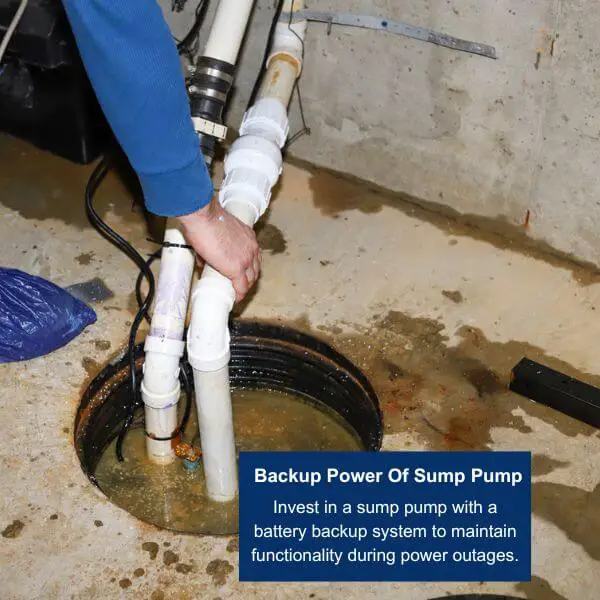
Mold growth in crawl spaces can pose health risks and threaten a home’s structural integrity.
Mold spores, carried by the stack effect, can lead to health problems, especially for those with allergies or weakened immune systems.
Additionally, mold can cause wood rot in crawl space components, resulting in uneven floors and weakened support.
Wet crawl spaces in North Carolina can experience freeze-thaw cycles and frost heave, which damage concrete surfaces and pillars.
This cumulative damage can lead to serious structural issues over time, including warped window frames, uneven floors, and wall cracks.
Maintaining a dry crawl space is crucial for a healthy home environment and a strong foundation.
How Do Sump Pumps Work?
A sump pump works by safeguarding the lowest section of your basement. In this area, a hole measuring about 2 feet in depth and 18 inches in width is excavated into your concrete floor, creating what is called a sump pit or sump basin.
When water gets into the basement, it flows into this pit. Imagine a float, like the one in your toilet tank, inside the pit. When the water level rises enough, it makes this float rise, and that’s the signal for the sump pump to start working.
The sump pump’s job is to take all that extra water and pump it out of the basement through pipes.
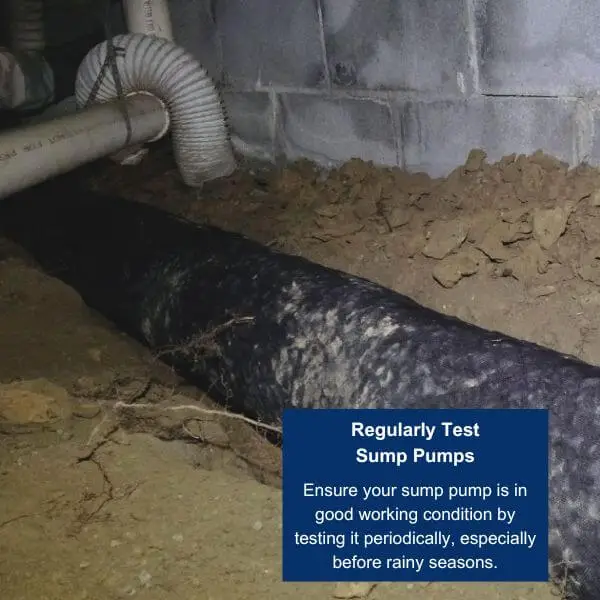
It sends the water far away from your house so it can’t cause any damage, resolving the issue of house shaking when walking.
Sump pumps are especially helpful when there’s heavy rain, big storms, or melting snow. Instead of your basement getting flooded, the sump pump keeps it dry by moving the water away.
Why Does The Suction Power Of Sump Pump Matters?
The suction power of a sump pump is a critical factor to consider when installing one to address bouncy floors caused by moisture-related issues.
The pump’s ability to efficiently and effectively remove water from your crawl space or basement is directly related to its suction power.
A powerful sump pump can quickly and consistently remove water, helping to prevent the accumulation of moisture that can lead to structural damage, mold growth, and, ultimately, bouncy floors.
The more powerful the pump, the better it can handle high volumes of water, making it suitable for areas prone to heavy rainfall or excessive groundwater.
One sump pump option that I found to be reliable in terms of suction power and overall performance is the WAYNE WaterBUG Sump Pump. This pump is known for its robust design and ability to handle demanding conditions.
It offers a 1/6 horsepower motor, which provides sufficient power to effectively pump out water from your crawl space or basement.
Manufactured with durable materials, it ensures long-lasting performance. When I installed it, it could pump out almost 5 inches of water under a 50 ft house, in about 4 1/2 hours.
The maximum water flow rate of this sump pump is 23 Gallons Per Minute.
I must say, another option that truly impressed me was the WAYNE Heavy Duty Basement Sump Pump.
This sump pump proved to be a game-changer when it came to dealing with extraordinary suction power and ensuring the utmost reliability.
When I installed this sump pump in my basement, its 1/2 horsepower motor immediately caught my attention.
It provided an incredible pumping capacity, far surpassing my expectations.
Even in situations where heavy rainfall or excessive groundwater posed a threat, this sump pump managed the task with ease, swiftly removing water from my crawl space.
One feature that stood out as a lifesaver was the integrated vertical float switch. This ingenious mechanism ensured automatic operation, which meant I didn’t have to constantly monitor water levels.
The pump would activate itself when the water level rose and deactivate when it dropped, ensuring a seamless and continuous water removal process.
What truly set this sump pump apart was its inclusion of a 12-volt battery backup system.
Living in an area prone to power outages, I often worried about the effectiveness of my basement drainage system during such times.
With this backup system, my concerns vanished. It seamlessly took over in the event of a power failure, keeping the pump running and preventing any potential flooding or floor instability.
In all honesty, the WAYNE Heavy Duty Basement Sump Pump only addressed the issue of bouncy floors by efficiently managing moisture but also ensured that it could perform consistently, regardless of external factors.
I won’t deny that this sump pump does come with a somewhat higher price, but it’s worth the investment.
For those seeking a more budget-friendly option to address bouncy floors, I wholeheartedly recommend the Superior Pump 92341 with Vertical Float Switch.
This sump pump offers an excellent balance between cost-effectiveness and reliable performance.
When I opted for this pump to fix floor shaking when walking in my old house, I was pleasantly surprised by its capabilities despite its affordable price point.
The 1/3 horsepower motor may be slightly less powerful than some high-end models, but it still effectively manages moisture in my basement, keeping it dry and free from potential floor issues.
4. Crawl Space Dehumidifier
A bouncy floor can be a clear indicator of excessive moisture in your crawl space, which in turn can lead to various issues. Fortunately, crawl space dehumidifiers can help fix this problem.
According to the United States Environmental Protection Agency (EPA), it is recommended to maintain relative humidity levels in an area below 60 percent (6).
Lower humidity not only creates a more comfortable environment but also serves as a deterrent for pests like cockroaches and dust mites.

Crawl spaces left unprotected often experience significantly higher relative humidity levels, making them susceptible to rapid mold and pest infestations.
Over time, these issues can weaken the structural integrity of the supports beneath your floors.
Installing a crawl space dehumidifier system help remove up to 100 pints of water per day, preventing the absorption of moisture by the wooden structures in your home.
This proactive approach helps safeguard your home from mold and pest-related damage.
Additionally, the dehumidifier system offers automatic drainage, eliminating the need for manual emptying, and ensuring that your crawl space remains dry and well-regulated.
Related Source: How To Fix Gaps In Hardwood Floors?
How Does Crawl Space Dehumidifier Work?
Crawl space dehumidifiers work by reducing the humidity within your crawl space. They do this by extracting moisture from the air and converting it into a liquid form.
These devices utilize an evaporator coil that captures heat from the surrounding air, effectively extracting the moisture responsible for fostering mold and mildew growth.
By reducing excessive humidity levels, crawl space dehumidifiers help prevent further structural damage to your home that may have already occurred.
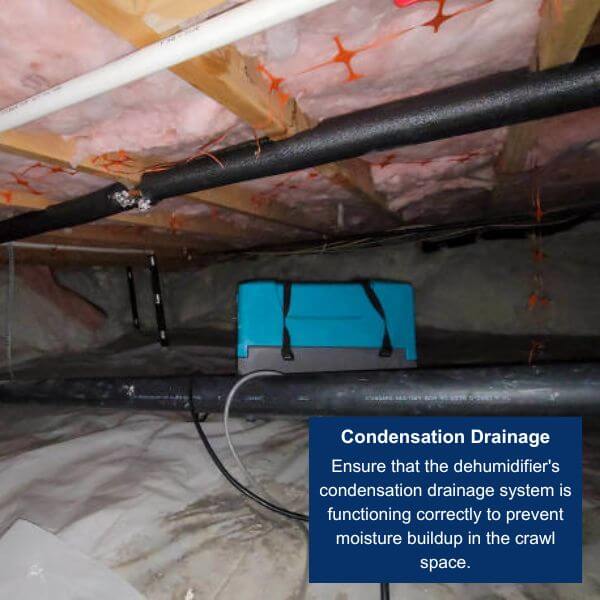
Additionally, these dehumidifiers contribute to improved indoor air quality by removing allergens like pollen and dust mites, which can trigger allergies.
Why Does the Dehumidification Capacity Of A Crawl Space Dehumidifier Matter?
When selecting a crawl space dehumidifier to address bouncy floors, it’s essential to choose one that matches the size and moisture level of your crawl space.
A properly sized dehumidifier will efficiently manage moisture and maintain the desired humidity level, ultimately contributing to the stability and safety of your floors.
Having the excellent dehumidification capacity of removing effectively up to 120 pints of water per day (PPD) from the air in your crawl space, ALORAIR Crawl Space Dehumidifier made my life easier.
During heavy rainfall season when my ground floor warehouse experienced significant moisture issues, this dehumidifier proved to be a reliable solution.
This high capacity is especially beneficial for larger crawl spaces or areas with severe moisture problems.
One of the standout features that I truly appreciated was its low noise level. Since my crawl space is located beneath a living area, I was concerned about any potential disruption caused by the dehumidifier.
The ALORAIR dehumidifier operated quietly, ensuring minimal disturbance to my home’s occupants while still effectively controlling moisture and addressing the root cause of my bouncy floors.
Living in an area with colder winters, the automatic defrosting feature proved to be a lifesaver.
This feature prevented ice buildup on the evaporator coil, ensuring that the dehumidifier continued to operate efficiently even in low temperatures. It’s a thoughtful addition that ensured year-round effectiveness.
The automatic drainage system was another aspect of this dehumidifier that I found incredibly convenient.
I connected it to a drain hose, which allowed the dehumidifier to continuously remove water without the need for me to constantly monitor or empty a collection bucket.
This hands-free operation made maintenance hassle-free and ensured that my crawl space remained consistently dry and well-regulated.
It truly proved to be a life-changing solution to fix excess moisture level causing bouncy floors and helped me create a more comfortable and secure environment in my home.
5. Crawl Space Vent Door
In a collaborative study conducted by Helsinki University of Technology, Laboratory of Heating, Ventilating, and Air-Conditioning, and the University of Kuopio, Department of Environmental Sciences in Finland, in subarctic climates, crawl spaces pose summer challenges with high outdoor air moisture entering, raising humidity to 85-95%. This can lead to condensation over several weeks, exceeding the mold growth threshold of 75-80% relative humidity (7).
These vent doors play a vital role in maintaining the right level of humidity under your home, preventing the unwelcome build-up of moisture that can lead to unstable and bouncy floors.
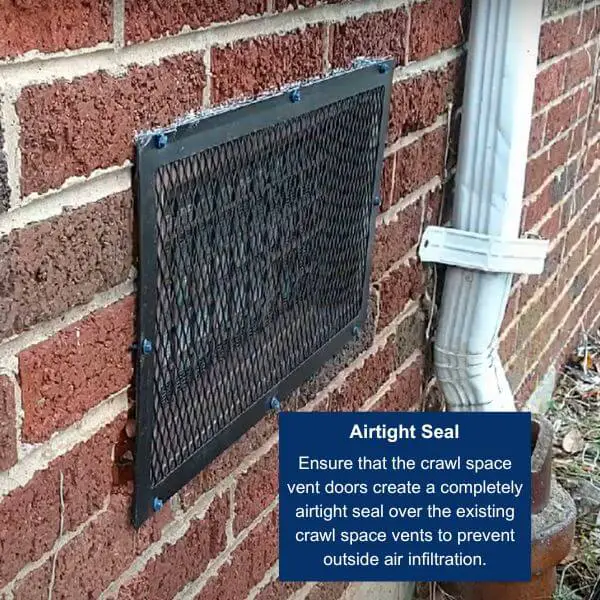
When combined with other strategies designed for crawl spaces, they effectively control the environment beneath your house.
The key to keeping your crawl space, and by extension, your floors dry and strong lies in managing airflow.
In the past, it was believed that crawl space vents would create a well-ventilated and comfortable space by allowing air to flow freely in and out.
However, these vents ended up doing the opposite by letting in humid air, which can be problematic.
To counter this issue, the best approach is to block this airflow, and that’s precisely what crawl space vent doors are designed to do. These crawl space vent doors are purpose-built to help you effectively combat crawl space moisture.
How Do Crawl Space Vent Door Work?
Crawl Space Vent Doors are designed to seal off or close the existing crawl space vents in your home.
By doing so, they prevent outside air, including humid air, from entering your crawl space. This is important because outside air can bring moisture with it, especially in humid or rainy conditions.
Crawl space vent doors typically feature a simple but effective design. They are made from durable materials that can withstand the harsh conditions under your home, including moisture, pests, and temperature fluctuations.
They are designed to fit snugly over existing crawl space vents, creating an airtight seal.
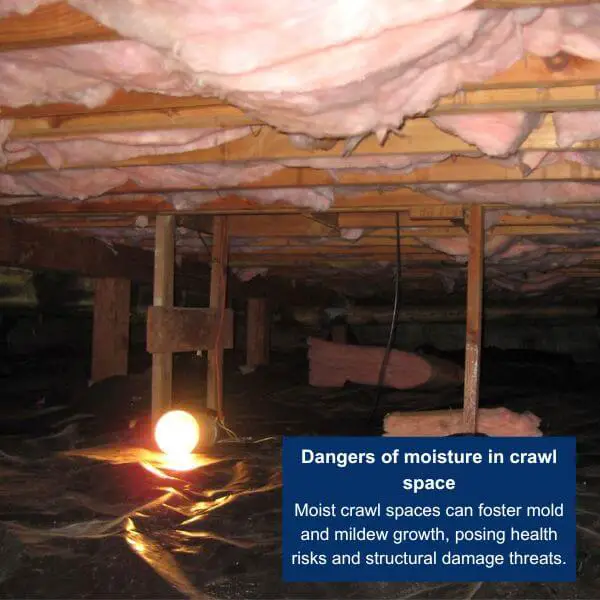
By sealing off the vents, crawl space vent doors help to create a controlled environment beneath your home.
This controlled environment is essential for preventing moisture-related issues, including bouncy floors.
When the humidity level in your crawl space is regulated and kept at an appropriate level, it reduces the risk of wood rot, mold growth, and other problems that can weaken the structural integrity of your floors.
Must READ: How To Fix Discolored And Sun-faded Hardwood Floors?
Why Material Matters for Crawl Space Vent Doors?
When choosing crawl space vent doors to fix bouncy floors, its material should be effective and sturdy in preventing moisture infiltration.
One excellent option is the Crawl Space Access Door. I was truly impressed by this crawl space vent door, particularly its durability.
This vent door is constructed from high-quality acrylonitrile butadiene styrene (ABS) materials, which are known for their toughness and moisture resistance. In the challenging crawl space environment where humidity is a constant issue, the ABS construction ensures that the vent door won’t deteriorate or warp over time due to moisture exposure.
This helps us maintain a long-lasting and effective seal over your crawl space vents.
ABS is not only moisture-resistant but also highly resilient to pests, which is another common problem in crawl spaces. You can trust that this vent door won’t crack or become brittle, ensuring its durability in your crawl space.
The design of the crawl space vent door is specifically made to fit standard crawl space vent openings, measuring 12″ in height and 20″ in width, perfectly. This snug fit is vital for creating an airtight seal, effectively keeping outside air from infiltrating your crawl space.
One more notable feature is its sleek black finish. Although aesthetics might not be your primary concern for crawl spaces, the black color allows the vent door to blend in with its surroundings, making it less noticeable.
It can be especially important if your crawl space is visible or accessible from the outside.
In summary, I found the Crawl Space Access Door to be an excellent choice for maintaining the integrity of your home’s foundation and addressing issues like bouncy floors.
6. Crawl Space Support Jacks
According to the research conducted by the University Of Minnesota – St. Paul Campus, If the floors are bouncing when you walk or jump on them and windows are affected and rattling due to the impact, it is a sign that the joists are either undersized or cracked (8).
When your floor joists start to fail, crawl space support jacks system steps in as one of the dependable backbones your home needs. These robust companions are here to ensure your home stands strong.
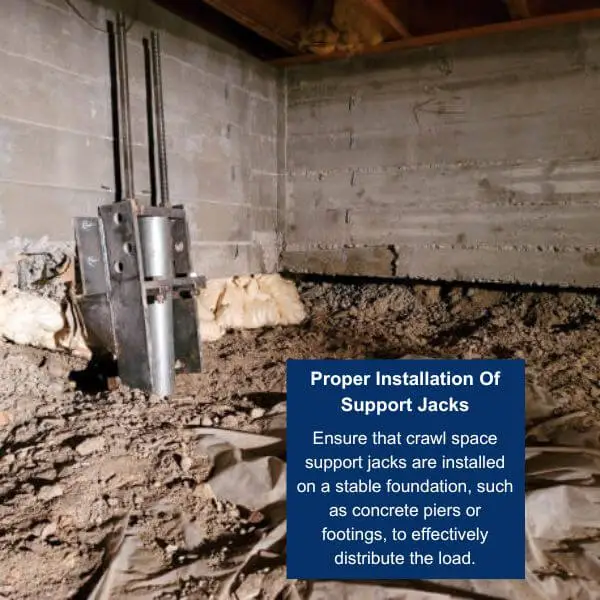
What sets crawl space support jacks apart is their remarkable adaptability. They can be adjusted to fit virtually any crawl space size, providing essential stabilization for your home’s compromised support beams and floor joists. Say goodbye to that bothersome bounce.
On average, these jacks can handle loads exceeding an impressive 24,000 pounds per jack maximum.
With the addition of support jacks, you can achieve a balanced distribution of your house’s load, ensuring your floors stay as solid as a rock and stop vibrations. Say hello to a firmer, more secure foundation for your home.
How Do Crawl Space Support Jacks Work?
Crawl space support jacks are an innovative solution to address bouncy and spongy floors caused by damaged or weakened floor joists and support beams.
They work by providing additional support to compromised structural elements, strengthening floor joists in your crawl space.
These support jacks are highly adaptable, making them suitable for various crawl space sizes and configurations.
The key functionality of crawl space support jacks lies in their adjustability. They can be precisely positioned beneath the compromised floor joists or support beams, allowing for customized leveling and support.
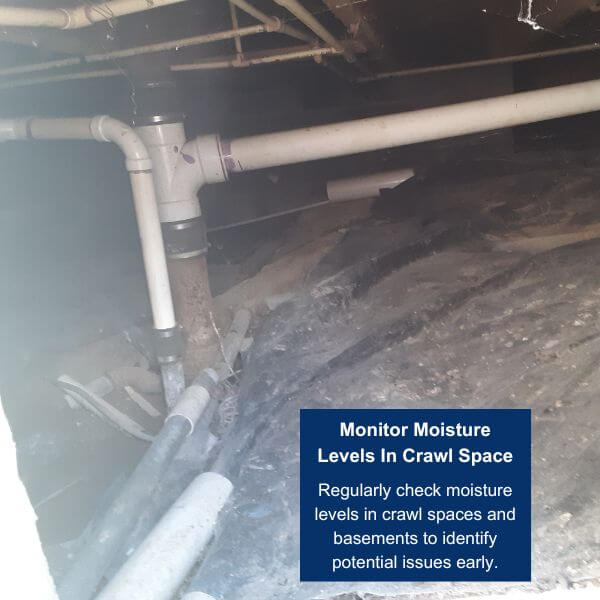
By strategically placing these jacks in the crawl space, they effectively counteract the sagging or bouncing areas of the floor.
The installation process involves identifying the damaged or weakened structural elements, clearing the crawl space area for safe installation, and placing support jacks beneath the problem areas.
Once in position, the support jacks are adjusted to lift and stabilize the floor. This The leveling process ensures that the floor regains its firmness and stability, eliminating the bothersome bounce.
Why Load-Bearing Capacity Matters for Crawl Space Support Jacks?
The load-bearing capacity of crawl space support jacks is an important aspect to consider when addressing bouncy floors.
It determines how much weight the jacks can effectively support, which is directly related to their ability to stabilize the floor.
One noteworthy option that I personally favor is the Akron Adjustable Floor Jack for crawl spaces, primarily due to its outstanding load-bearing capacity.
These support jacks are capable of handling loads exceeding 5,000 pounds per jack, which is of utmost importance for ensuring the stability and security of your floor, effectively preventing any unwanted bounce.
I’ve personally found these jacks to be highly effective for my purposes. In my case, I needed additional permanent support to rectify a minor issue with a bouncy floor.
With approximately 18 inches of clearance between the ground and the bottom of the open beam floor joists, I opted for a solution using the Akron Adjustable Floor Jacks.
My setup involved using a 7-inch by 7-inch by 3.5-inch thick paver as the bottom support, with a piece of 2×8 lumber on top of the paver.
This provided a solid foundation for the jacks to work effectively. The installation process was smooth, as I had ample room to work in the crawl space.
One suggestion I followed was placing two 1/2-inch bolt fender washers in the top flange of the jack, a tip I came across in a review.
This additional step helped enhance the jack’s performance. Using an 18-inch pipe wrench, I easily tightened the jack to the desired level.
I didn’t encounter any workmanship issues during the installation, contrary to some concerns raised by other users.
In fact, I found the installation process straightforward and efficient. I did need to adjust the first jack I installed, as it initially lifted the floor too high, but this adjustment was easily managed.
Overall, I plan to order more of these Akron Adjustable Floor Jacks to address another area of my floor that requires support.
Their impressive load-bearing capacity, coupled with their reliable performance, makes them a valuable solution for ensuring a stable and bounce-free floor.
7. Crawl Space Encapsulation
In buildings with controlled ventilation crawl spaces, it’s essential to install a vapor barrier on the crawl space’s earth floor. This helps minimize moisture infiltration and safeguards insulation against condensation, following the research study of The Pennsylvania State University (9).
Crawl space encapsulation can help improve the stability of your floors and reduce bounciness by controlling temperature and moisture. It takes the vapor barrier concept a step further.
It involves sealing the entire crawl space, including the walls and floor, with a vapor barrier.
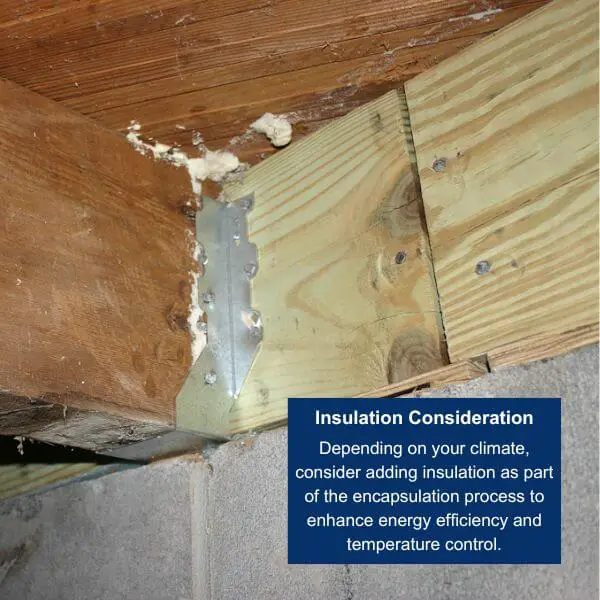
This creates a sealed and conditioned space that not only prevents moisture intrusion but also regulates temperature more effectively.
By eliminating the dampness in the crawl space, crawl space encapsulation can greatly reduce the risk of floor joist damage, which is a common cause of bouncy floors.
If you want to fix shakiness in particularly hardwood floors, do check out why my hardwood floors shake when I walk on them?
How Does Crawl Space Encapsulation Work?
Crawl space encapsulation is a comprehensive solution for managing the health of your crawl space.
It involves sealing your crawl space from external air and moisture, effectively integrating it into your home’s envelope.
This process combines various waterproofing techniques to create a controlled and protected crawl space environment.
The first step in crawl space encapsulation is to install a high-quality vapor barrier. This barrier acts as a protective shield, preventing moisture from infiltrating the crawl space.
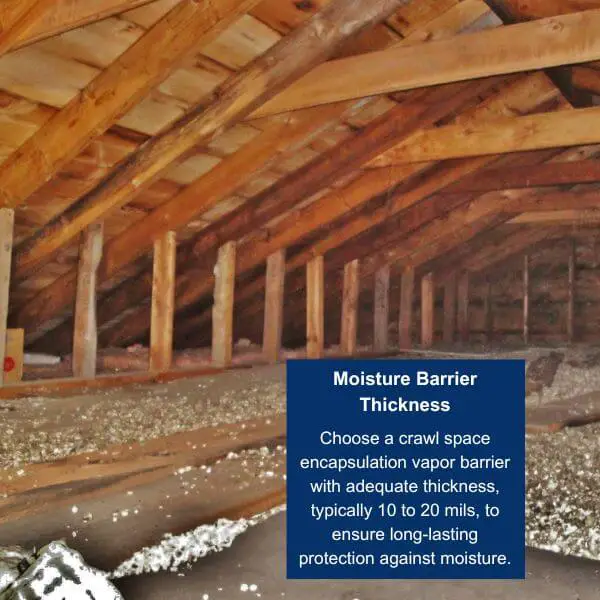
Additionally, intentional openings for moisture, such as crawl space vents, are sealed off.
While crawl space vents were once thought to regulate moisture, they often have the opposite effect by retaining moisture and promoting mold growth.
Depending on the moisture levels in your crawl space, a drainage system may be recommended.
Various options, including drainage matting and crawl space sump pumps, can be employed to manage water effectively.
Furthermore, to maintain stable humidity levels in both your crawl space and the rest of your home, it’s advisable to install a crawl space dehumidifier.
These machines effectively control humidity, preventing it from reaching levels conducive to mold and mildew growth.
Crawl space encapsulation is a holistic approach to crawl space management, addressing moisture, temperature, and humidity concerns. It not only improves the health of your crawl space but also enhances the overall comfort and energy efficiency of your home.
Crawl space encapsulation involves several essential components and techniques:
- Dehumidification: Crawl space dehumidifiers maintain optimal humidity levels, preventing excess moisture and mold growth.
- Insulation: Depending on the climate, insulation helps control temperature and improve energy efficiency in crawl space.
- Drainage: Systems like drainage matting, pipes, and sump pumps manage water intrusion, preventing moisture buildup.
- Sealing Cracks: Cracks in foundation walls are sealed to prevent water from entering.
- Encapsulation Materials: Durable vapor barriers, often reinforced polyethylene, create a continuous seal on the floor and walls.
- Sealing Access Points: Crawl space doors and hatches are sealed to prevent external air and moisture entry.
- Conditioning: Some systems use HVAC equipment to regulate temperature and humidity.
- Maintenance: Regular checks ensure the encapsulated space remains effective, including dehumidifier maintenance and vapor barrier inspections.
Cost To Fix Bouncy Floors
The average cost to fix bouncy floors starts from $1000 that can go up to $10000 depending on the extent of the issue, the underlying causes, and the type of repair required.
Minor fixes, such as reinforcing floor joists or adding support beams, might cost a few hundred to a couple of thousand dollars.
However, for more extensive problems that necessitate structural repairs or even floor replacement, the cost could range from several $1,000s to $10,000s.
Wrapping It Up
Bouncy floors can be dangerous to both people and structures, posing risks of damage to interior finish, floors foundation, house collapsing, and many other hazards.
Improper joists, damaged subflooring, or poor structural design can all contribute to floor deflection.
These issues must be fixed to prevent damages and ensure the safety and longevity of the building.
The above guide on fixing bouncy floors can help homeowners and builders understand the necessary steps to address floor deflection effectively with various methods.
However, if you find it difficult to do it yourself, you can consider hiring professionals for major repairs or structural modifications.
FAQs
Q. How do I know if my floor is unstable?
If your floor feels bouncy, it’s a clear indication of instability, often linked to problems with its underlying support. However, assessing floor stability goes beyond just bounce.
You should also watch out for any noticeable dips, sags, or slopes across the floor’s surface. Additionally, pay attention to squeaking or creaking sounds when walking on it, as these can be signs of loose or shifting subflooring.
Q. Is floor deflection dangerous?
Floor deflection can be dangerous as it indicates damaged floor joists, weakened sub floor, which are important for the structural foundation of your flooring.
Over time, this can lead to sagging or uneven floors, creating trip hazards and making your living space less stable.

As a co-creator of FlooringFlow.com, Emma Sophia comes on board to answer all your questions related to any flooring problems. Together with John Henry, she’s gained extensive experience in fixing many flooring problems in their own house as well as in friends and family’s. Now, she wants to share her knowledge that she gained during floor remodeling, restoring, and DIY projects.


